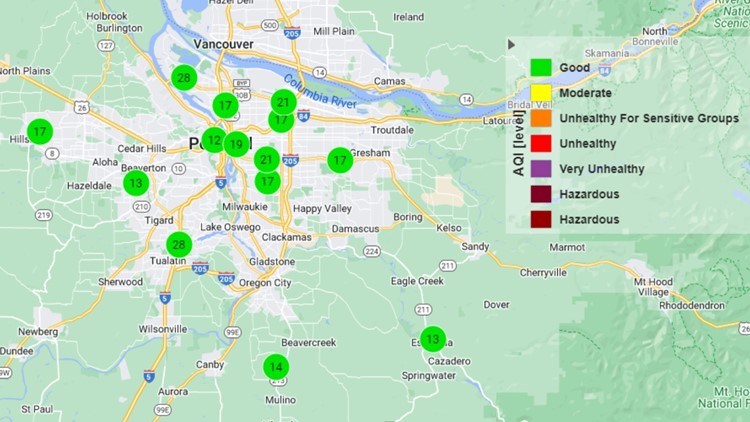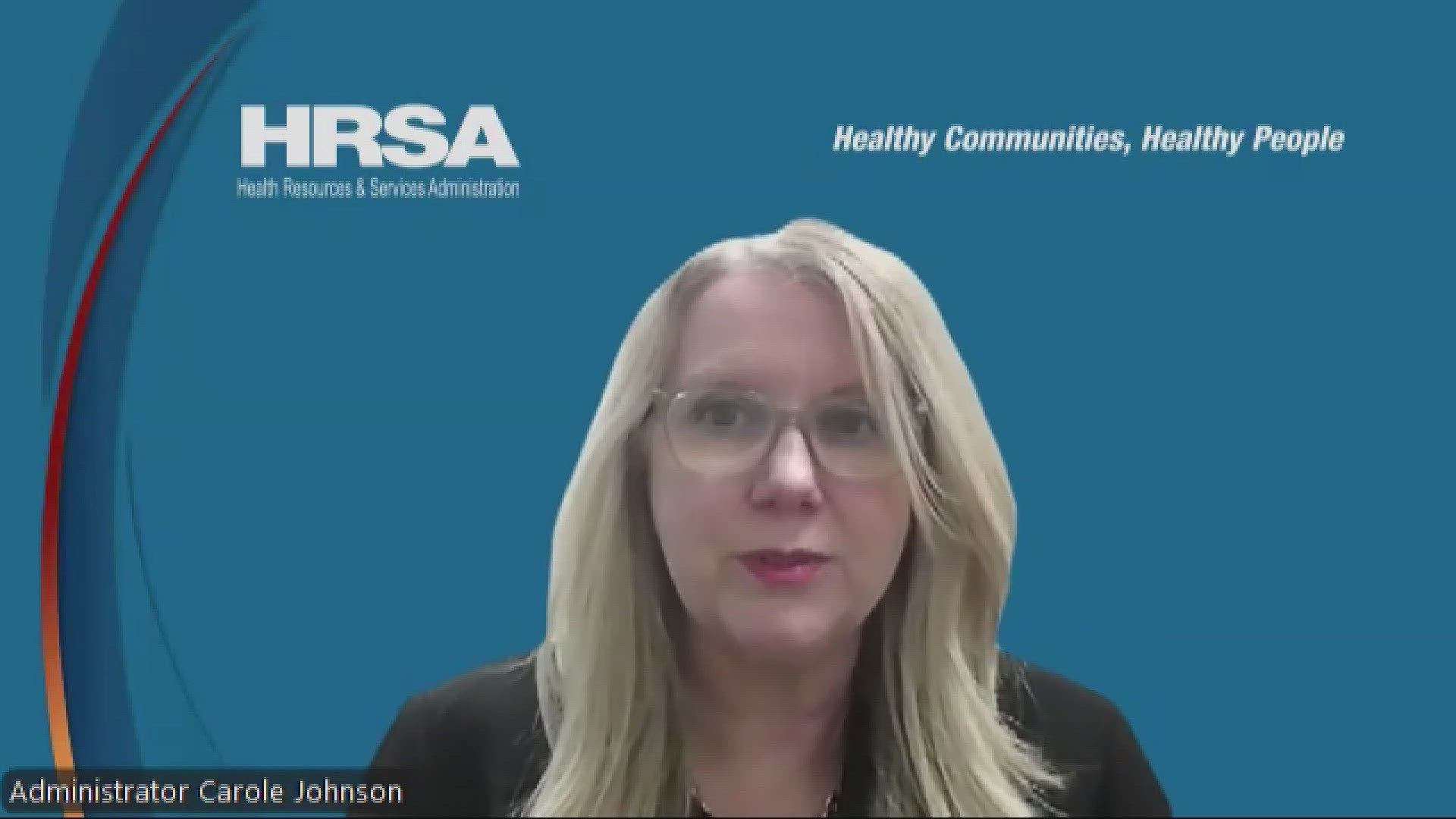PORTLAND, Ore. — The air quality in Portland and surrounding areas, which was among the worst in the world for several days this week, finally returned to healthy levels Thursday night.
On Thursday morning, the World AQI Ranking ranked Portland's air quality second-worst across the globe. Only Seattle, dealing with wildfire smoke, ranked higher. But as of Friday morning, Portland had dropped to 82nd and Seattle to 84th in the world rankings as the air quality returned to healthy levels.
There are a few areas across Oregon that continue to have unhealthy air quality, including near the Santiam State Forest, near Sunriver, in the Oakridge area and a couple areas in Southern Oregon near Roseburg and Shady Grove. But most of Oregon's air quality rated as good Friday morning.
On Thursday, Carissa Dez, who lives in the Portland metro area, told KGW the poor air quality during the week made it hard for her to breathe.
"I've been taking allergy medicine everyday, just in case, because I want to be able to breathe during the day so I can work," Dez said.
Portland's dismal air quality this week was a product of wildfire smoke from the Nakia Creek Fire burning in Southwest Washington, near Camas in Clark County. The fire, which exploded from about 150 acres to more than 1,500 acres on Sunday, saw its growth slow and containment increase over the past couple days, and on Thursday, all evacuation orders were rescinded. But the smoke persisted through Thursday afternoon, making life miserable for everyone in and around Portland. The air quality moved rankings from fourth worst in the world on Wednesday up to second worst on Thursday.
"Everybody can experience symptoms of smoke exposure but there are some people we're really concerned about," Gabriela Goldfarb of OHA said Thursday. "Pregnant women, children, elderly people wi threspiratory infections, people who have pre-existing heart or respiratory disease. They're all at higher risk, along with people working or exerting themselves outdoors."
On Wednesday night, KGW Chief Meteorologist Matt Zaffino, predicted correctly that relief from the poor air quality was on the way.
"We turn the page on that story Thursday afternoon and evening," Zaffino said Wednesday night. "The smoke will clear from west to east during the day Thursday, as cooler winds from the coast blow and in and change out our stagnant air. The morning will still be smoky, but our air quality will be much improved by sunset. The western valleys should be smoke free by Friday morning."
Even better news? Zaffino said a strong Pacific cold front arrives Friday, which will bring with it the first rain of October.
"Area wildfires will get a good soaking rain," Zaffino said. "The weekend will be cool and showery as we go from much-above-average temperatures to below-average temperatures for the next week or so, with frequent periods of rain."
Zaffino said the valley will get between a half-inch and a full inch of rain and the Cascades will get one to two inches. Sunday morning will start dry but a new storm is expected to arrive Sunday night and Monday.
Temperatures will cool this weekend, with highs in the 50s, rather than the 70s and 80s Portland has seen in recent days, Zaffino said.
The storms will also bring snow to higher elevations, with significant accumulations on the ski slopes. Zaffino said the passes may see sticking snow overnight Friday into Saturday morning.
How to check the air quality in your area
The Department of Environmental Quality (DEQ) and partner agencies monitor smoke levels and provide reports on how clean the air is and any potential health risks.
People who want to know what the air quality in their neighborhood looks like can visit the Air Quality Index (AQI) interactive map on the DEQ website. The AQI map uses a color-coded system ranging from "Good" (labeled by green dots), which means air pollution posts little to no risk, to "Hazardous" (labeled by maroon dots), meaning air quality is unhealthy for everyone.
The Environmental Protection Agency also has an online tool where people can type in their zip code, city or state to view the air quality index.
How to protect yourself from smoke
Smoke can irritate the eyes and lungs. People most at risk include infants, young kids, older adults and people with certain medical conditions such as heart or lung disease.
The DEQ recommends people take precautions when smoke levels are high:
- Stay indoors and keep windows and doors closed
- Avoid outdoor activities
- Use high-efficiency particulate air (HEPA) filters in indoor ventilation systems or portable air purifiers
The DEQ notes that cloth, dust and surgical masks don't protect people from harmful particles in smoke. A particulate respirator marked with the word "NIOSH" can help prevent smoke exposure.



